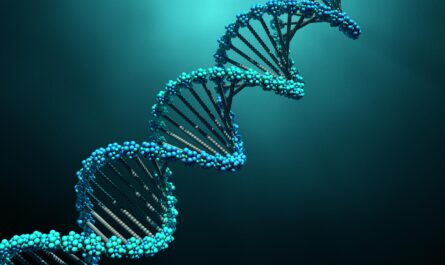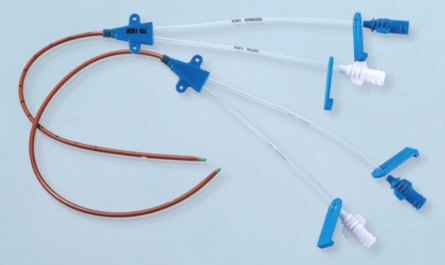The Southern Blotting Process
The southern blotting technique involves several key steps:
Restriction Digestion
The process begins with restriction enzyme digestion of genomic DNA samples. Restriction enzymes are used to cut the DNA at specific recognition sites. This results in fragments of different sizes depending on the frequency of the recognition sites.
Agarose Gel Electrophoresis
The restriction-digested DNA samples are separated by size using agarose gel electrophoresis. The charged DNA molecules migrate through the pores in the agarose gel when an electric current is applied. Smaller fragments travel farther than larger ones.
Transfer to Membrane
After separation, the DNA in the gel is denatured and transferred or “blotted” onto a nylon or nitrocellulose membrane using capillary action. This preserves the positions of the DNA fragments from the gel.
Hybridization with Probes
The membrane is then incubated with a DNA probe – a short single stranded DNA or RNA molecule labeled with a marker such as radioactive phosphorus (P32).The probe binds or hybridizes to complementary DNA sequences on the membrane through molecular base pairing.
Detection and Analysis
Excess unbound probe is washed away, and the membrane is exposed to an X-ray film or imaged with a digital system. Places where the probe hybridizes show up as bands, indicating the location and size of the complementary sequences in the original DNA samples. The results are analyzed to detect DNA polymorphisms.
Applications of Southern Blotting
Genetic Mapping
Southern blotting allows researchers to map the locations of specific genes or DNA sequences on chromosomes through restriction fragment length polymorphism (RFLP) analysis. It detects variations in restriction sites or fragment sizes between individuals.
Genetic Diagnosis
By using probes complementary to mutated genes or DNA sequences, southern blotting enables the diagnosis of genetic disorders at the DNA level. It can identify pathogenic mutations, expansions, deletions that cause diseases.
Gene Screening
When screening genomic DNA libraries, Southern Blotting helps identify clones containing the gene of interest based on hybridization with a specific DNA probe. This facilitates cloning and sequencing of novel genes.
Quantification of DNA
The intensities of bands in Southern blots can be used to estimate the copy number and abundance of repeated DNA sequences, transgenes or viral/bacterial sequences present in the host genome.
Genomic Organization
Analysis of banding patterns derived from probing genomic DNA digested with multiple restriction enzymes provides insights into genomic architecture like gene clusters, translocations, and duplications.
Limitations and Advancements
Southern blotting is highly specific but not very sensitive. It requires relatively large amounts of DNA. Modern techniques like polymerase chain reaction (PCR) and DNA microarrays have augmented Southern blotting by allowing analysis of trace amounts of DNA. While Southern blotting remains the gold standard for genomic mapping of specific DNA regions, next-generation sequencing is gradually replacing it in research and diagnosis due to higher throughput and resolution.
*Note:
1. Source: Coherent Market Insights, Public sources, Desk research
2. We have leveraged AI tools to mine information and compile it



